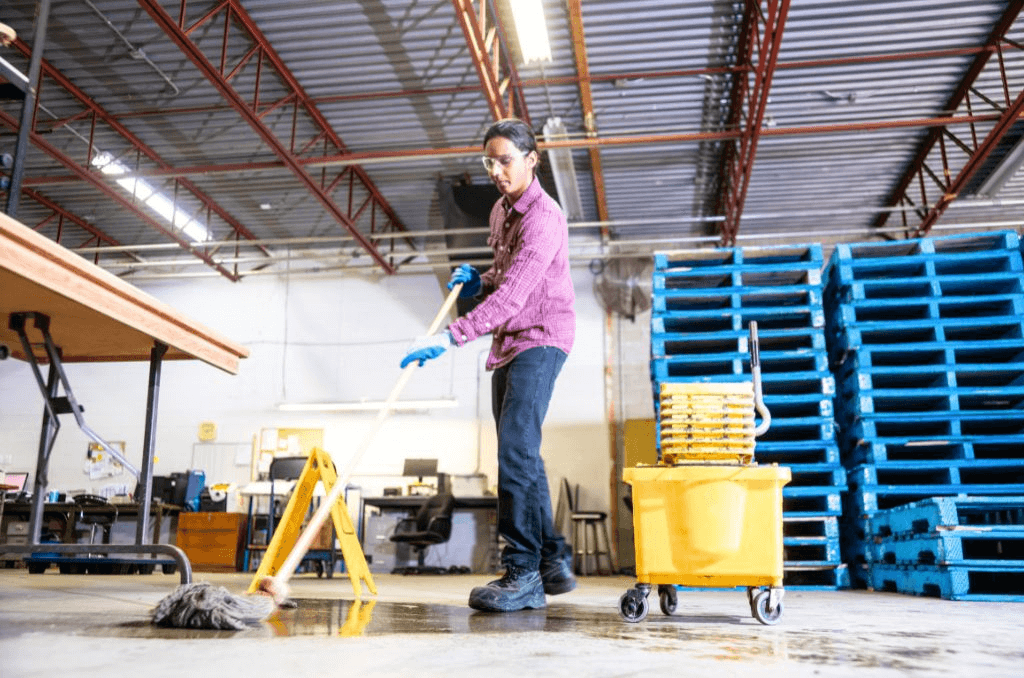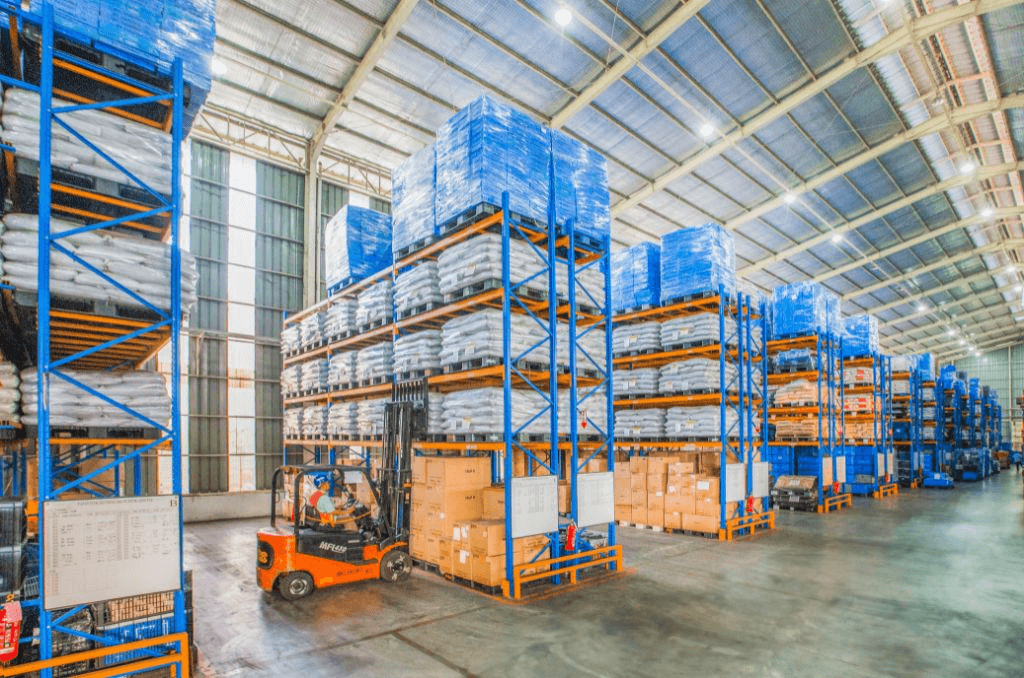Employment within the warehouse industry has been steadily increasing since around 2010, making it a large source of jobs in the United States. As of 2021, about 8 million people were employed in various warehouse positions.
It’s hard to visualize just how many people that is. But, if you were to take all 8 million warehouse workers and put them into one state, they’d be the 13th largest state in the country! That’s a lot of people to keep safe at work.
As warehouses are bustling with activity and heavy equipment, it is crucial to implement effective safety measures. By following best practices and fostering a culture of safety, organizations can create a secure work environment for their employees.
You can implement many precautions and safety procedures to keep your work environment safe and compliant. Let’s review some of the things that should be done to ensure the well-being of all your employees.
Conduct Regular Safety Training

Investing in comprehensive safety training for all warehouse staff is a must. This training should cover a range of topics, including:
- How to properly handle equipment
- What to look for when identifying potential hazards
- How to follow proper safety procedures
You should also provide regular training sessions, refreshers, and updates on safety protocols to help employees stay informed and vigilant. Here are some key resources to reference:
- OSHA Warehouse Safety Pocket Guide
- Forklift eTool
- Ergonomics Overview
- OSHA Warehouse Safety Resources
Ensure Proper Equipment Use
Proper equipment use is crucial for ensuring safety in a warehouse setting. Warehouses are dynamic environments with numerous potential hazards, making it essential for workers to adhere to strict safety protocols.
It’s also essential that employees are provided with well-maintained equipment suitable for the tasks they perform. Conduct routine inspections of machinery such as forklifts, pallet jacks, and conveyor belts to identify any defects or malfunctions.
You should also always make sure operators wear appropriate safety gear and receive the necessary training to operate equipment safely and efficiently. In addition, properly displayed personal protective equipment (PPE) signs can serve as a helpful reminder that wearing appropriate gear can help greatly reduce injuries.
At SafetySign.com, we offer a large variety of PPE signs for all your safety needs!
Maintain a Clean and Organized Workplace

A tidy and well-organized work area minimizes the risk of accidents. Implementing a regular cleaning schedule and enforcing cleanliness is important for reducing hazards and keeping your employees accident free.
Proper safety signage is a key way to help enforce this important safety measure.
We offer a large selection of products, such as Safety First Clean Up Spills signs, and Keep Aisle Clear signs to serve as visual reminders that clean workspaces, waste management, and designated storage areas will contribute to a safer work environment.
Implement Effective Signage and Markings
Clear and visible warehouse safety signs are crucial to communicating important safety information. You should display signs indicating speed limits, hazardous areas, pedestrian zones, etc.
Another way to increase safety is by using warehouse floor signs to designate walkways, loading and unloading zones, and emergency exits. Prominently displayed visual cues can help prevent accidents and keep employees aware of their surroundings.
Promote Proper Lifting Techniques
Download our free safe lifting technique poster!
Improper lifting techniques are one of the main causes of injuries in warehouses or physical labor-type jobs., according to UNC. To help mitigate this risk, employers should provide education to employees on the importance of proper lifting techniques, such as bending at the knees, using the legs, and keeping the back straight.
Employers should always provide mechanical aids, such as dollies or lifting equipment for heavy or odd-shaped objects and loads. Encouraging teamwork for heavy lifting tasks can also help distribute weight and reduce strain on individuals.
Implement Emergency Preparedness
Prepare for emergencies by developing and communicating emergency response plans to all warehouse employees. Conducting regular drills to practice evacuation procedures, such as evacuation routes and evacuation assembly points, and fire safety protocols and first aid techniques can help ensure that everyone is on the same page should an emergency arise.
You should always maintain well-stocked first aid kits throughout the facility and make certain that employees are trained in basic first aid practices. Properly displaying first aid kit signs is another way you can guarantee a quick response during
Regularly Inspect Shelving and Racks

Warehouse racking and shelving systems should be inspected regularly to identify any signs of damage, weakness, or defect. Overloaded or damaged racks can collapse, causing severe injuries and damage to stored goods. Implement an inspection schedule and promptly repair or replace any faulty equipment. It’s also important that employees know to report any potential hazards they notice immediately to help prevent any potential injuries.
Mark Warehouse floors
Warehouse floor marking is important for ensuring safety within your facility. By clearly marking walkways, aisles, and traffic lanes, employees and visitors can navigate spaces with ease and minimize the risk of collisions or accidents.
Floor markings also help designate restricted areas, hazardous zones, and emergency exits, ensuring that everyone is aware of potential dangers and evacuation routes. Additionally, floor markings can indicate storage areas and proper stacking heights.
Overall, proper warehouse floor marking promotes order, organization, and enhanced safety, reducing the likelihood of accidents and promoting a secure working environment.
Establish a Safety Culture
Last but most certainly not least, cultivating a safety-conscious culture within the warehouse is paramount. Encourage open communication channels where employees can report safety concerns or near misses without fear of retaliation. Recognize and reward safe practices and regularly involve employees in safety initiatives and committees. By involving the entire workforce, you create a sense of ownership and responsibility for safety.
Warehouse safety is a shared responsibility that requires a proactive approach from all levels of a company. By implementing these eight essential warehouse safety tips, you can significantly reduce the risk of accidents and injuries in your facility. Remember, a safe work environment protects your employees and contributes to increased productivity and operational efficiency. Invest in training, maintain equipment, and promote a safety-focused culture to ensure the well-being of your warehouse staff and the success of your operations.

